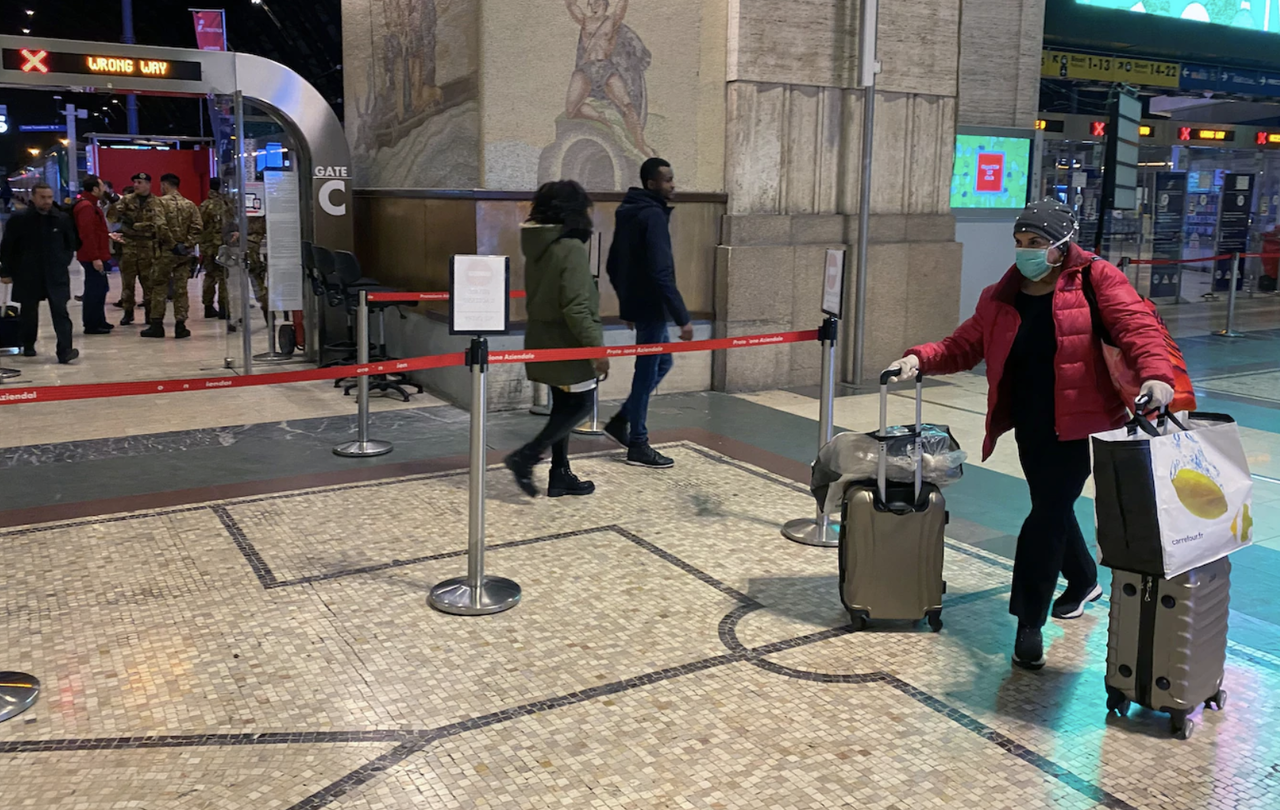Scientists Warn About Dangerous “Tipping Point” Where Covid-19 Goes From Mild To Deadly
As researchers, doctors and epidemiologists spend more time studying the coronavirus under a microscope, as well as in the 100k+ infections that have yielded reams of useful data, a troubling trend has emerged: researchers have identified a “tipping point” at which the virus goes from dangerous to deadly in extremely susceptible patients.
According to research, while many patients experience nothing more than a mild cold, one in seven patients develops difficulty breathing and other “severe” complications, while 6% become critically ill and require hospitalization to stabilize their condition, risking death if they can’t receive the highest level of care.
Patients in these life-threatening situations typically suffer from respiratory and other vital system failures, according to the report by a team of WHO researchers delivered last month. Sometimes, sufferers can even experience sceptic shock.
Since roughly 10-15% of mild-to-moderate patients progress to this next severe state, it’s important for hospitals and doctors to understand which patients are at highest risk of a worsening infection so they can factor this into their risk assessments and direct resources and attention accordingly. Because of these 10-15%, 15% to 20% of that group may progress to critically severe infection stage requiring the highest level of attention and care to save a life.
Patients at highest risk include people at age 60 and older and those with pre-existing conditions such as hypertension, diabetes and cardiovascular disease.
This type of triage should at least be familiar to most doctors since it resembles the infection profile of the seasonal flu, albiet with more patients progressing to the final most critical stage, said Jeffery K. Taubenberger.
When everything goes well, white blood cells attack the virus and lock the infection down within a few days.
Infection generally starts in the nose. Once inside the body, the coronavirus invades the epithelial cells that line and protect the respiratory tract, said Taubenberger, who heads the viral pathogenesis and evolution section of the National Institute of Allergy and Infectious Diseases in Bethesda, Maryland. If it’s contained in the upper airway, it usually results in a less severe disease.
But if the virus treks down the windpipe to the peripheral branches of the respiratory tree and lung tissue, it can trigger a more severe phase of the disease. That’s due to the pneumonia-causing damage inflicted directly by the virus plus secondary damage caused by the body’s immune response to the infection.
“Your body is immediately trying to repair the damage in the lung as soon as it’s happening,” Taubenberger said. Various white blood cells that consume pathogens and help heal damaged tissue act as first-responders. “Normally, if this goes well, you can clear up your infection in just a few days.”
But if this doesn’t happen, if the virus persists, and continues to attack the tissue of the nose and throat, at some point, it will become more difficult for the body to fight off a secondary bacterial infection. Such secondary bacterial infections are particularly dangerous because they can damage the stem cells in the lungs, basically making it impossible for a patient’s lungs to heal.
Secondary bacterial infections represent an especially pernicious threat because they can kill critical respiratory tract stem cells that enable tissue to rejuvenate. Without them, “you just can’t physically repair your lungs,” Taubenberger said. Damaged lungs can starve vital organs of oxygen, impairing the kidneys, liver, brain and heart.
“When you get a bad, overwhelming infection, everything starts to fall apart in a cascade,” said David Morens, senior scientific adviser to the director of the National Institute of Allergy and Infectious Diseases. “You pass the tipping point where everything is going downhill and, at some point, you can’t get it back.”
That tipping point probably also occurs earlier in older people, as it does in experiments with older mice, said Stanley Perlman, a professor of microbiology and immunology at the University of Iowa in Iowa City, who has studied coronaviruses for 38 years.
But this isn’t the only way things can go wrong. Even healthy younger adults have succumbed to the virus, including Dr. Li Wenliang, the 34-year-old ophthalmologist who was one of the first to warn about the coronavirus in Wuhan. He died after receiving antibodies, antivirals, antibiotics, oxygen and having his blood pumped through an artificial lung. Scientists have theorized that some people have more of the distinctly shaped protein receptors in their respiratory epithelial cells that the virus targets.
Tyler Durden
Mon, 03/09/2020 – 19:45
